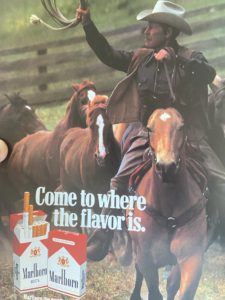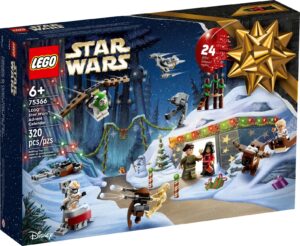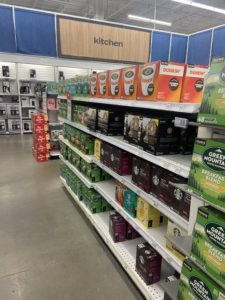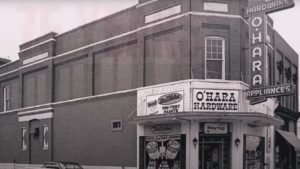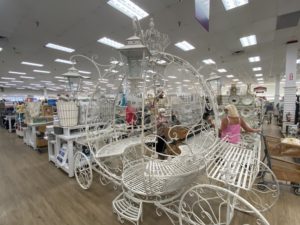 CAMBRIDGE, Mass. – Whether a brand is new or old, you need a process for turning it around. So says Bobby Riley, CEO and Creative Director of Boston-based Soldier Design.
CAMBRIDGE, Mass. – Whether a brand is new or old, you need a process for turning it around. So says Bobby Riley, CEO and Creative Director of Boston-based Soldier Design.
Riley founded his own retail store Concepts and held an executive position at Burton Snowboards. Today his independent brand development and design shop, founded in 2002, has worked with companies including the sports equipment maker Maverik Lacrosse, raingear company Helly Hansen, the Boston area retailers Achilles and The Tannery, the defense and tactical outfitting company Otte Gear and the Foster Grant sub-brands Angel and Gargolye eyewear. It’s an action oriented and hip list; other brands include BSC, EESA, Karmaloop, Lemelson MIT, Raw, Merrell and Surething.
Authenticity and Passion
What’s lacking in most brands? A sense of raw enthusiasm. While everyone talks about being true to the brand, and authentic, Riley feels that the key to pulling off the “brand thing” is that you have to be “highly passionate.” It seems intuitively obvious, but many brands miss the mark. Why? Because for any brand, there must be a “noble pursuit” about it.
Riley did not come to brand management through advertising and marketing agencies. Instead, he came through the product side, which allowed him to “see what worked right away.”
20th Century Branding
In an industrial era when brands were about commodities and manufacturing, a brand was the sum of the decisions about its raw materials. While the process has changed, and many products are made abroad, Riley believes a brand is still about managing the “unique sum of impressions, whether it’s few or many.”
To organize the process for companies, Riley has developed a process that he calls Brand Seeking. He believes that when charting a brand’s future for a company, it is important to channel and create structure in order to find the “true brand.” Many entrepreneurs are creative and good at what they do, but sometimes, with entrepreneurial tendencies, focus is needed. To “manage decision makers” he goes through a series of exercises, creating a one page document, what he calls an Action Intent Guide. Everyone agrees upon it.
“You quite literally have to get everyone on the same page,” says Riley, and not let them get to “wrapped up” in details. After the internal consensus, you let the outside in. To ensure that the changes happen properly, an internal working group, selected from different departments, keeps an eye on the branding strategy.
Some case studies:
- A sports equipment manufacturer: One of his major clients is the Maverik brand of lacrosse equipment. Founded in 2004, the company markets itself as a by lacrosse players, for lacrosse players. Founder John Gagliardi, himself a player, successfully challenged longtime (and iconic) brands STX and Brine. Their success? Authenticity and pure intent. Says Riley, “All the kids are about who’s legit.” But the brand is not just about having a cool lacrosse star own the company and show up in the marketing. In the case of Maverik, every step of production becomes part of the experience. “They make it, they pack it, they ship it,” says Riley. “You are showing them a trajectory that is very captivating.”
- Local Start Up Retailers: Brand leadership is not only available to manufactured consumer brands, but can also be applied to regional retailers. For retailers Achilles and The Tannery, Soldier utilized the highest design elements, the smartest store design and most creative approach. Says Riley, “We can make people look a lot bigger than they are.” (BrandlandUSA note: Foot Locker and Athlete’s Foot would do well by looking at these concepts.)
- Established Brands: The case of Helly Hansen was a bit different. In this case, the venerable Norwegian company came to Soldier in 2004. They had a long corporate story, with Helly Juell Hansen founding the company in 1877 to make oilcloth raingear. Over the 20th century, the company produced a steady stream of product innovations that made the company even have a following on North Sea oil platforms. Helly Hansen wanted to “talk to youth culture.” One solution was to develop a panel of opinion leaders who wore the clothes. It worked. With a brand as well-known and luxury as Helly Hansen, it would have worked to simply license the name, but Riley felt that it was a dis-service to the brand to just “slap a logo on a hat.” Soldier was able to build its “brand bonds” through mystery, intimacy, performance and trust.
- Spin offs and brand extensions: Soldier’s most interesting “brand” development is Northwestern, named after Capt. Sig Hansen’s fishing boat. Soldier branded the boat FV Northwestern, which appears in the Discovery documentary show Deadliest Catch.



